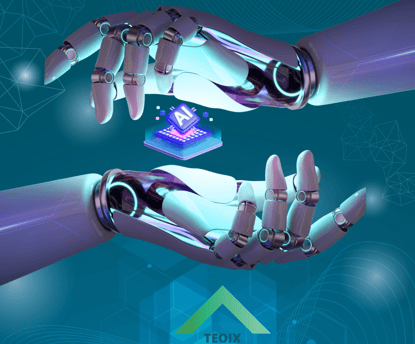Exploring the Transformative Power of Natural Language Processing (NLP) in AI
ARTIFICIAL INTELLIGENCE
5/2/20242 min read


Introduction:
One area of artificial intelligence (AI) that is constantly developing is natural language processing (NLP), and it is notable for the significant influence it has on human-computer comprehension and interaction. NLP enables a broad range of applications, from chatbots and virtual assistants to sentiment analysis and machine translation, by enabling machines to understand, interpret, and produce human language. This piece explores the nuances of natural language processing (NLP), its role in artificial intelligence (AI), and how it can revolutionize a number of fields.
Understanding Natural Language Processing:
NLP is fundamentally an interdisciplinary field that combines artificial intelligence, computer science, and linguistics. Bridging the gap between machine comprehension and human communication is its main goal. In order to extract meaning, sentiment, and intent from human-generated information, natural language processing (NLP) algorithms are developed to process and analyze natural language data in spoken or written form.
Key Components of NLP:
Tokenization: Tokenization is the process of dividing a text into smaller words or phrases.
Part-of-Speech (POS) Tagging: Giving words in a phrase grammatical labels (noun, verb, adjective, etc.).
Named Entity Recognition (NER): Named Entity Recognition (NER) is the process of recognizing and classifying named entities, such as individuals, groups, or places.
Syntax Analysis: Analyzing sentences' grammatical structures to determine their meaning is known as syntax analysis.
Semantic Analysis: Finding a text's underlying meaning beyond its literal interpretation is known as semantic analysis.
Sentiment analysis: Identifying the emotional tone or sentiment—whether neutral, negative, or positive—expressed in a text.
Applications of NLP in AI:
Virtual Assistants: Natural language processing (NLP) underpins virtual assistants such as Siri, Alexa, and Google Assistant, which allow users to communicate with devices through voice commands.
Chatbots: Natural language processing (NLP)-based chatbots converse with users in a conversational manner while offering assistance, locating information, and even counseling.
Machine Translation: Natural Language Processing (NLP) makes it easier to translate text between languages, improving accessibility and international communication.
Text Summarization: NLP algorithms can automatically provide brief summaries of long texts, which can help with comprehension and information retrieval.
Sentiment analysis is a field of NLP that examines social media posts, customer reviews, and comments to determine how the general public feels about certain goods, services, or occasions.
Information Extraction: To enable data mining and knowledge discovery, natural language processing (NLP) approaches extract structured data from unstructured text sources including emails, documents, and web pages.
Challenges and Future Directions:
NLP still has to overcome a number of obstacles in spite of its amazing advancements, such as linguistic ambiguity, context awareness, and cultural subtleties. Moreover, NLP models may propagate inherent biases in training data, producing unjust or erroneous results. Research into stronger algorithms, moral issues, and data-driven strategies is still needed to address these problems.
NLP is expected to grow more in the future thanks to developments in deep learning, neural networks, and transformer models. By pushing the bounds of language understanding, these technologies are allowing machines to produce text that appears human, have more complex conversations, and understand context more accurately.
Conclusion:
AI's foundational technology, natural language processing is changing how computers communicate with and comprehend human language. Neural network processing (NLP) applications are widely used in everyday life, from sentiment analysis to virtual assistants, improving accessibility, efficiency, and communication. NLP's revolutionary influence on a wide range of fields will only increase as it develops further, influencing artificial intelligence and human-computer interaction in the future.


